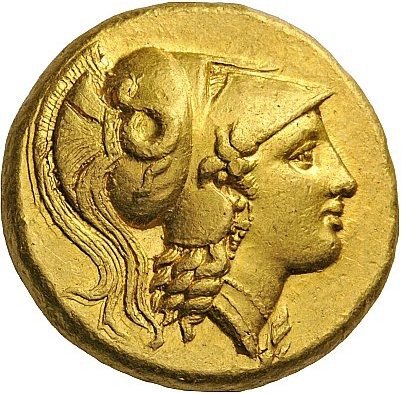How to Learn Ancient Greek Coins
A Collector’s Guide to Reading History in Silver and Bronze
Why These Coins Still Speak Today
If you’ve ever held an ancient Greek coin — even a humble bronze obol — you’ve held a voice from the past.
These aren’t just currency. They’re mini-masterpieces: portraits of gods, battle symbols, city pride, and cultural power — all compressed into coins small enough to carry in your palm.
But how do you actually learn to understand these pieces? How do you go from admiring them… to reading them like a book?
This guide is here to help you get started — step by step, from curious beginner to confident collector.
🧠 First: Learn the Language of Numismatics
Numismatics (the study of coins) comes with its own lingo. You’ll want to get familiar with these basic terms:
-
Obverse: The front of the coin (usually the portrait or primary figure)
-
Reverse: The back (often shows animals, deities, or emblems)
-
Denomination: The coin’s “value” — like drachma, obol, stater
-
Legend: The inscriptions (usually in ancient Greek)
💡 Quick Tip: Download a free numismatic glossary or grab David Sear’s “Greek Coins and Their Values” — it’s the collector’s bible.
⚖️ Understand Greek Coin Denominations
Greek coins didn’t work like modern cents and dollars. They had regional standards — but some basics appear across the Greek world:
-
Obol – Tiny bronze or silver coin used for small transactions
-
Drachma – The backbone silver coin of many city-states
-
Tetradrachm – A big silver coin (4 drachmas), often stunning in design
-
Stater – A weight-based denomination, often gold or silver, varies by region
💡 What to Do: Start learning by comparing sizes and weights. That alone can help you ID common types.
🏛️ Learn to Spot City-States by Design
Each Greek city-state wanted its coinage to say: “This is our culture. Our gods. Our power.”
Some of the most iconic include:
-
Athens: Athena on one side, owl on the other
-
Aegina: Sea turtle or tortoise — tied to its naval strength
-
Corinth: Pegasus — the winged horse of mythology
-
Rhodes: Radiant head of Helios
-
Delphi: Laurel leaves or tripods (related to Apollo’s oracle)
💡 Pro Tip: Use coin ID databases like WildWinds or acsearch.info — plug in keywords and compare visuals.
🔍 Study the Symbols & Stories
Greek coins are full of meaning — nothing is random.
You’ll often see:
-
Gods: Athena (war & wisdom), Zeus (king of gods), Apollo (light), Artemis (hunt)
-
Myths: Heracles, Medusa, Chimera, Amazon warriors
-
Animals: Owls, lions, bulls, dolphins — all tied to local identity
-
Tools or weapons: Shields, thunderbolts, cornucopias
💡 Collector Note: Knowing mythology gives you a serious edge. You’ll start spotting references other collectors miss.
🪙 Get Hands-On: Start Your Collection
Books are great — but nothing beats holding the real thing.
Start small:
-
Bronze coins from Athens, Macedonia, or Seleucid regions
-
Look for starter lots on VCoins, Heritage Auctions, or CNG
-
Stick to reputable sellers and always ask about provenance or authenticity
💡 Pro Tip: Don’t chase perfection at first — even worn coins teach a ton.
🎓 Take Courses and Watch the Pros
There are great tutorials and history lectures out there — many free.
Try:
-
YouTube: Channels like Ancient Coin Geek, Dr. Steve’s Numismatics
-
Coursera / edX: History courses often touch on coinage
-
Udemy: Look for beginner numismatics classes
💡 What Helps Most: Watching experts identify coins live — you’ll pick up tricks quickly.
🏛️ Visit Museums & Exhibitions
Seeing ancient Greek coins up close (in a case, under lights) is powerful.
Some top places to visit:
-
The British Museum (London) – enormous ancient coin collection
-
Numismatic Museum of Athens – located in a mansion once owned by Heinrich Schliemann
-
The Louvre (Paris) – underrated coin section with rare Greeks
💡 Travel Tip: Always check for rotating exhibitions or temporary ancient coin shows — they’re gems.
📚 Build Your Numismatic Library
A few books can completely change how you look at a coin.
Recommended:
-
Greek Coins and Their Values – David R. Sear (great for IDs and prices)
-
A Handbook of Greek Coinage Series – Oliver Hoover (organized by region)
-
The Coinage of Ancient Greece – Barclay Head (classic reference)
💡 Collector Insight: Keep a notebook — jot down symbols, IDs, prices you see online. It helps long-term memory more than you think.
🤝 Join the Community
Coin collecting can be solitary — but it doesn’t have to be.
Get involved in:
-
American Numismatic Association (ANA)
-
British Numismatic Society (BNS)
-
Forums like CoinTalk, NumisForums, or Reddit’s r/AncientCoins
💡 Real Benefit: Show your coin, ask a question — and get answers from serious collectors in minutes.
💡 Practice, Practice, Practice
Like reading a language, the more coins you see, the faster you recognize patterns.
Train your eye by:
-
Studying auction catalogs (NAC, CNG, Leu)
-
Comparing obverses and reverses of the same types
-
Estimating values based on condition and strike quality
💡 Remember: It’s OK to be wrong at first. Every mistake is a lesson — and the more coins you touch, the faster you grow.
🏁 Final Thoughts: A Journey Worth Taking
Learning ancient Greek coins isn’t a sprint — it’s a lifetime of discovery.
You’ll start by recognizing Athena and the owl… and before long, you’ll be spotting rare city issues, reading partial inscriptions, and knowing which dolphin belongs to Arethusa.
Whether you collect for the history, the art, or the thrill of the hunt — you’re stepping into one of the most fascinating corners of human civilization.
